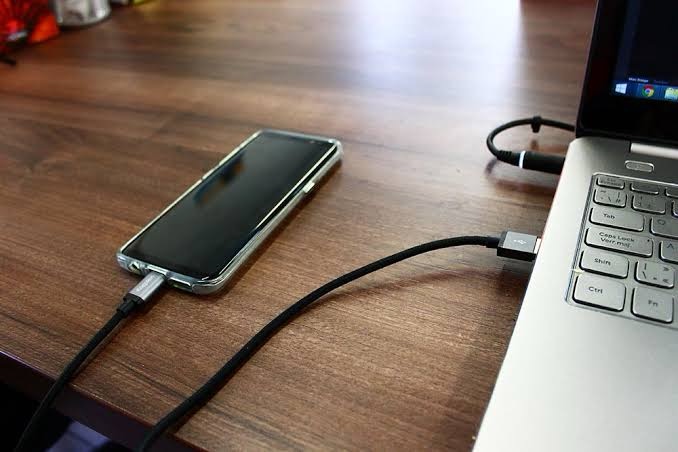You won’t be able to reach the internet very well if the Wi-Fi settings screen on your Android phone or tablet says there is been an authentication problem. Below are various things you can try to fix the issue and get back online.
Why Am I Getting an Authentication Failed Error?
This problem doesn’t have a single, clear reason, but below are some ideas we will look into:
- Your password isn’t correct.
- A glitch or failure on your phone or network hardware.
- A poor connection to the router.
- Network settings are corrupt.
- Your phone is having trouble dealing with the frequency band.
How to Fix the Android Wi-Fi Authentication Problem
Below are the list of 9 helpful methods to fix the Android Wi-Fi Authentication Problem. Detailed steps are listed. Follow the steps of each method to fix your problem.
1. Reset Wi-Fi Connection
2.Go to settings on your Android device.
3.Look for Wireless and Network, click on Wi-Fi option.
4.A list of nearby Wi-Fi will be displayed here. Hit the Wi-Fi that you want.
5. Choose forget network on the popping up menu.
6.Try to reconnect to the Wi-Fi by entering the password.
Switch on Airplane Mode and Turn It off
1. Switch on the Airplane mode on the quick settings menu.
2. Go to the settings, with the Airplane mode still active, turn on the Wi-Fi and connect to the network.
3. Switch the Airplane mode off if your Wi-Fi connection is OK.
Fix the Android Wi-Fi Authentication Problem with DroidKit
It is the Android system problem that causes the Wi-Fi authentication to fail on your Android phone sometimes. So, you can try an Android solution called DroidKit, Android Phone Toolkit, which can help you solve Android phone problems with ease like your Samsung phone is on but the screen is black. Check the features of DroidKit as below:
DroidKit – All-round Android Phone Toolkit
- Fix several Android OS problems like wifi authentication problems.
- With original size with no loss of picture quality and no compression.
- All models of Samsung phones and tablets are supported.
- Provide solutions on Android data recovery, lock screen removal, etc.
In a simple few steps, Now, follow the guidelines below to fix your phone’s issue:
Step 1. Get DroidKit on your computer. Launch DroidKit > Connect your Android device and tap on the Fix System Issues panel.
Step 3. DroidKit will match the PDA code of your Samsung Device Automatically > Then click Download Now to download the firmware.
Step 4. Then click fix now button after firmware is downloaded.
Step 5. Put your device into download mode.
Step 6. It will automatically start repairing your Android system once finished. After completing the repair process, you will get system fixed successfully page as below. All the system issues fixed and your Android device will be restarted.
Change from DHCP to Static
1.On your Android device, go to Settings > Wireless and Networks > Wi-Fi.
2.Select the Wi-Fi name you want to connect to, and a popping-up box will appear.
3.Hit the Modify Network option or any related option depending on the model.
4.Check the box beside Show advance options.
5.Under the IP settings, change it from DHCP to Static. An IP Address field will appear below.
6. Pen down the information included in the static IP address fields then delete it from the device, re-enter it again, and save.
5. Restart the Router
There may be a problem with the router if the problem is not on the phone. If you are not able to determine what the problem is, try to restart the router first, the problem may be solved.
1.Turn off the wireless router. Wait a few minutes, and then turn on the router.
2.Any device needs time to connect to the router. Then, connect your device and check if the connection is established.
Use WPS Push Button
WPS means Wi-Fi Protected Setup, which is a network security standard to create a secure wireless home network without entering your password.
1.On an Android device, go to Settings > Wireless and Networks > Advance settings.
2.Depending on your model, There will be a lot of different WPS options there. Once you see the WPS connection or WPS Push Button, press it. Then a WPS setup will appear on the screen waiting for the configuration from the router.
3.Go to your router and press the WPS button and wait for the connection to be successful on your android device.
Change Security Protocol
Try to change the security protocol, If you know the username and password of your router. If the security protocol is WPA2, change it to WPA and vice versa. Then, go to your Android device, use the Forget network feature mentioned above, and reconnect it to the Wi-Fi.
8. Check the Maximum Devices Supported
Some wireless modems can only support a certain amount of devices’ connection. You can check through your manufacturer or service provider. And go to the wireless router settings and check what are the maximum devices there. Change that setting to a higher number and save the settings.
9. Update the Software on the Android Phone
If you do not update the operating system to the latest version quickly sometimes, then some small bugs may appear on your Android phone, which may cause a certain function to not work normally. You can fix them by updating the software to the latest version. Following the steps below:
Look for Settings on your phone > Scroll down and tap on Software update > Download updates manually.















